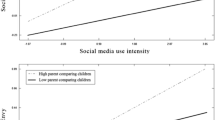Abstract
Two cabin groups (N=5 and 6) of 14- to 17-year-old males were observed during a five-week camping session. Recorded were all instances of dyadic dominance behaviors occurring between group members in three behavior settings. Various group sociometric exercises and life history data were also available. Similar to previously studied early adolescent groups, the current middle and late adolescents formed a group dominance hierarchy that remained relatively stable during the camp session and in the behavior settings. In marked contrast to early adolescents, however, physical variables such as pubertal maturation, athletic ability, and physical fitness no longer predicted relative ranking among group members. Rather, individual variations in intelligence, creativity, crafts skill, cabin spirit, peer popularity, and camp experience predicted the group structure. Physical means of expressing dominance status were rare among the older adolescents.
Similar content being viewed by others
References
Coleman, J. S. (1961).The Adolescent Society Free Press, Glencoe, Ill.
Dunphy, D. C. (1969).Cliques, Crowds, and Gangs Cheshire Press, Melbourne.
Gallagher, J. R., and Brouha, L. (1943). A simple method of testing the physical fitness of boys.Res. Quart. 14: 23–31.
Hallworth, H. J. (1953). Sociometric relationships among grammar school boys and girls between the ages of eleven and sixteen years.Sociometry 16: 39–70.
Omark, D., Freedman, D. G., and Strayer, F. F. (1980).Dominance Relations: Ethological Perspectives on Human Conflict Garland Publishing, New York.
Savin-Williams, R. C. (1976). An ethological study of dominance formation and maintenance in a group of human adolescents.Child Dev. 47: 972–979.
Savin-Williams, R. C. (1977). Dominance in a human adolescent group.Animal Behav. 25: 400–406.
Savin-Williams, R. C. (1979). Dominance hierarchies in groups of early adolescents.Child Dev. 50: 142–151.
Savin-Williams, R. C. (in press). Social interactions of adolescent females in natural groups. In Foot, H., Chapman, A., and Smith, J. (eds.),Friendship and Social Relations in Children, Wiley, London.
Savin-Williams, R. C., and Freedman, D. G. (1977). Bio-social approach to human development. In Chevalier-Skolnikoff, S., and Poirier, F. E. (eds.),Primate Bio-Social Development: Biological, Sociological, and Ecological Determinants Garland Publishing, New York.
Scheinfeld, D. R. (1973). Dominance, exchange and achievement in a lower income Black neighborhood. Unpublished doctoral dissertation, University of Chicago.
Sherif, M., and Sherif, C. W. (1964).Reference Groups Regnery, Chicago.
Siegel, S. (1956).Nonparametric Statistics for the Behavioral Sciences McGraw-Hill, New York.
Tanner, J. M. (1962).Growth at Adolescence Blackwell Scientific Publications, Oxford.
Thrasher, F. (1927).The Gang University of Chicago Press, Chicago.
Whyte, W. F. (1943).Street Corner Society University of Chicago Press, Chicago.
Author information
Authors and Affiliations
Additional information
Received his Ph.D. from the University of Chicago, Committee on Human Development, in 1977. Current teaching and research interests include early adolescence, the ecology of self-esteem during adolescence, and a biopsychological/ethological approach toward adolescence. Correspondence should be sent to the author at the above address.
Rights and permissions
About this article
Cite this article
Savin-Williams, R.C. Dominance hierarchies in groups of middle to late adolescent males. J Youth Adolescence 9, 75–85 (1980). https://doi.org/10.1007/BF02088381
Received:
Issue Date:
DOI: https://doi.org/10.1007/BF02088381




